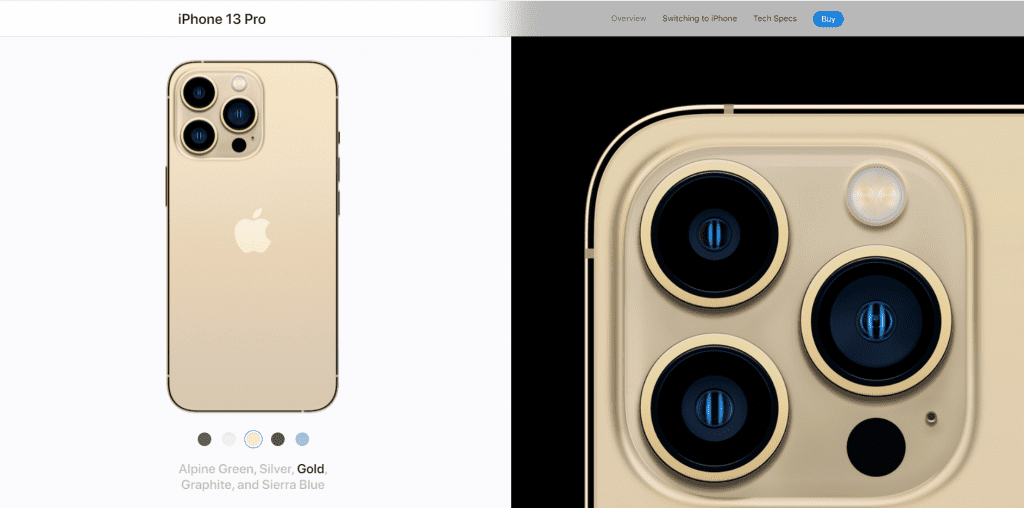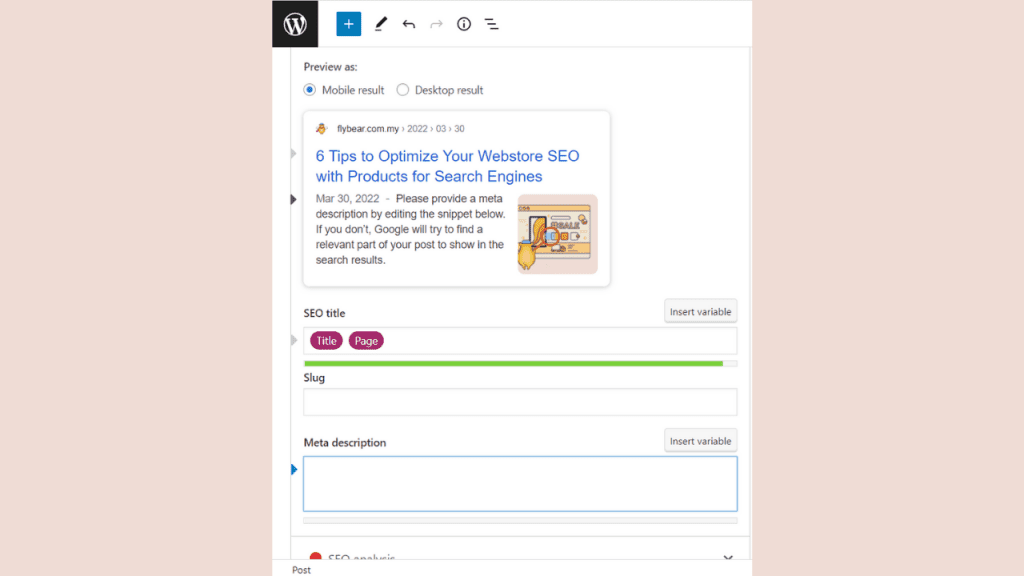How many times have you searched a bunch of random keywords in Google looking for a particular type of product? If you’re like us at FlyBear, then we bet you’ve lost count! The internet has definitely spoiled us, so much so that we don’t even bother to take note of product names anymore. After all, why should we when we can just key in “kitchen tap with adjustable nozzle”, instead of “Sink Faucet”, in Shopee? But that’s the beauty of the internet, we can string words together that form a ridiculous sentence and find exactly what we’re looking for.
Of course, that’s only possible when an E-commerce owner implements an effective Search Engine Optimization (SEO) (What Is SEO / Search Engine Optimization?) strategy. With a good SEO strategy for your products, you’ll be able to increase your webstore’s visibility in no time! Just follow these 6 tips and watch your viewership increase tenfold:
Tip #1: Publish High-Quality and Relevant Content About Your Product

When running an E-commerce business, it’s important to remember that customers can’t touch or feel your products. In order to compensate for the lack of tangibility, you have to publish high-quality images that look exactly like the real item and provide a detailed product description. Adding features that allow the products to be rotated or shown in different colors complemented by a product description that’s rich in keywords will definitely give your webstore a competitive edge. A great example of this is Apple’s website (iPhone 13 Pro). They have close up product images that represent the product in real life. By enticing customers with lifelike images (The Importance of High Quality Product Photography for Ecommerce – Results Imagery) of your product, they are more likely to purchase from your store as they find it visually appealing.
More often than not, customers are only interested in information pertinent to the products they need. Imagine you stumble upon an online store that sells air purifiers and essential oils, but all of a sudden there’s an entire section dedicated to the benefits of soy sauce. Wouldn’t you find that odd? So when coming up with content for your E-commerce site, it’s best to find topics that are relevant to your products. By doing so, you’ll be able to further encourage your customers to purchase your products because their eyes will be opened to a variety of benefits that come with it. Good content marketing (What is Content Marketing?) will keep your audience engaged while indirectly increasing brand awareness. Thus, creating content that is specially curated to suit your products is the first step in implementing an effective SEO strategy.
Tip #2: Add Product Page Title & Meta Tag Description

A crucial part of SEO are the product page titles and meta descriptions (Product Meta-Titles and Meta-Descriptions – Tillison Consulting). These titles and descriptions will be the first thing that your customers read before clicking into your webstore, think of it as a first impression that will make or break your business. In order to captivate your customers with your title and meta descriptions, it’s best if you keep your titles below 55 characters and your description below 155 characters. These descriptions will give your customer an idea of what products you sell and your brand’s story.
After a month or so, check to see if your impressions are higher than your click-through-rate or vice versa. If you have a higher impression rate then you might want to consider rewriting your meta description to make it more enticing. A good title and meta description will increase your visibility and engagement to attract more potential customers. It might take a few tries to get it right, but it will leave a significant impact on your E-commerce business.
Tip #3: Optimize Product Slug For Your Website
Product slugs are often overlooked by many E-commerce owners because a lot of them might not know what it is. To put it simply, a product slug (How to Write URL Slugs for Your Website) is the part of the URL that identifies a particular page. For example, in https://flybear.com.my/pick-pack-fulfillment/ , the ‘pick-pack-fulfillment’ part is known as the product slug.
Using a proper product slug with all the right keywords will help rank your website higher in search engines when users search for that particular word. In fact, the words in your product slug are used by Google to determine what your page is about (What is a slug and how to optimize it for SEO? • Yoast). When used accurately, product slugs are a great way to optimize your webstore’s SEO with minimal effort. So, the next time you’re adding a new product to your E-commerse site, use this formula to come up with your product slug for better SEO results – www.companyname/category/product-name/.
Tip #4: Enable Breadcrumbs

One of the best ways to optimize your webstore’s SEO is by enabling breadcrumbs (no, not the kind you eat). Breadcrumbs (Breadcrumbs For Web Sites: What, When and How | by Nick Babich | UX Planet) will help your customers seamlessly navigate through your site by showing them the path they took to reach that particular page. For instance, if you want to go to FlyBear’s estimation calculator, the breadcrumbs would look like this – Home > Pricing > Estimation Calculator.
Enabling this feature on your E-commerce site will help your customers keep track of what pages they’ve visited. Essentially, this will reduce the number of clicks it takes to get to a lower level page from the higher level pages. By doing so, it encourages new customers to peruse the website and get familiar with your products. This will inevitably lead to a lower bounce rate (Breadcrumbs In Web Design: Examples And Best Practices — Smashing Magazine) as well!
Tip #5: Add Alt Text For Product Images
Initially introduced as a way to improve the social media experience for the visually impaired, alt texts were used to describe pictures to help these users have a better understanding of the image. Lately, it has been adopted as part of an effective SEO strategy for E-commerce sites.
If you want your E-commerce site to rank higher in search engines, then you have to include a descriptive alt text (Image Alt Text: What It Is, How to Write It, and Why It Matters to SEO) for all your product images. When an image gets uploaded to a website, it comes out as <img src=”logo.png”/>. But search engines aren’t able to read or detect what the image is trying to convey through this simple image tag. Your typical alt text should be included in the image tag when developing the website. For example, <img src=”logo.png” alt=”flybear_logo”/> would be the alt text used to describe FlyBear’s logo on our homepage.
The inclusion of alt texts play a big role in ensuring that your E-commerce site is ranked as highly as possible. In fact, the more you describe the image, the better the results because you’ll be able to drive traffic from Google Images (Alt Text for SEO: How to Optimize Your Images). It’s best to avoid using one word descriptions like “packing”, instead use a simple sentence like “man packing a parcel” for your alt text. This may seem like a small matter, but optimizing your images with alt texts will increase your chances of being searched in image searches.
Tip #6: Use Relevant Product Tags and Categories
Customers often search for specific keywords when trying to find a particular product. Say you want to buy white curtains for your bedroom, the easiest way to search for this would be to search the keywords “white” and “curtains”. A successful E-commerce site will immediately pop up in your Google search because these keywords would be in their product descriptions.
These keywords are also known as product tags (An All-Embracing Guide to Product Categories, Product Tags, and Product Attributes – ConvertSquad) and are an immense help when boosting your webstore’s SEO. By including relevant product tags and categorizing your products, your E-commerce site would most likely appear in searches for those keywords. However, these product tags should constantly be updated (The Ultimate Guide to Product Tagging for eCommerce – Syte) to ensure that your webstore doesn’t get lost in the sea of online stores. Product tags and categories are also used to minimize the risk of buyer’s remorse. To make your webstore stand out, it’s better to include as many product tags as possible. By doing so, customers who are searching for similar products would stumble upon your webstore and might end up buying your products (Boost Sales with Unlimited eCommerce Product Tagging | Clarity). It’s important to remember that the more product tags you have, the greater your chances of being discovered on Google or other search engines. Adding product tags will not only boost your webstore’s SEO, but it will also enhance your customer’s shopping experience by simplifying the search process.
If you’re looking for a way to maximize your profit by focusing more on your business, then you’ve come to the right place. At FlyBear, we can handle all your pick and pack needs so that you can invest more time in growing your business. We’ll offer you a seamless and simple process to expedite your orders and requests. With us by your side, you can rest easy knowing that your customers will receive their items in mint condition. Check out our website for more information about our pick and pack services!
